A small jewel of Florence, the Salviati Chapel in Portinari Salviati Palace, is back on view to the public after decades of closure. The restoration of the small aristocratic chapel dedicated to St. Mary Magdalene and completely painted by Alessandro Allori and aides between 1579 and 1580, consecrated the following year, in August 1581 (on one wall of the chapel Allori moreover affixed his signature with the date 1580), was completed in these days. The restoration of the Salviati Chapel and other decorations in Portinari Salviati Palace was carried out by restorer Anna Medori(Faberestauro) with the collaboration of Andrea Vigna(Habilis) and the direction of Adriana Novelli, LDC Group project manager, and restorer Guido Botticelli. The chapel and palace (which is now home to a luxury tourist residence) will be open to visitors every Monday: guided tours cost 15 euros per person, 10 for Florence residents. All proceeds will be donated to fund restoration projects in Florence. For reservations call 055-535353 or email info@palazzoportinari.com. Groups will consist of a maximum of 10 visitors so as to ensure even in confined spaces safe conditions for decorations and people.
During the restoration, it emerged that the paintings in the chapel are oil paintings on the wall and not frescoes, as believed until now: a rare technique in the Florentine context (another famous example in Florence are the Carte Geografiche at the Uffizi painted by Ludovico Buti, one of Alessandro Allori’s assistants).
The pictorial cycle decorating the small chapel includes on the vault Prophets and Sibyls flanked by cherubs holding scrolls with passages from the Holy Scriptures alternating, in the corners, with the are alluding to the four sacrifices recalled in the Old Testament. On the walls, below the frieze with an elegant vine shoot, three stories of Magdalene(Magdalene wipes Jesus’ feet during supper at Simon’s house, Noli me tangere, Communion of Magdalene) appear painted, as if on mock tapestries, which are complemented by the altar panel depicting Christ in the house of Martha and Mary, and a predella, now lost, that contained the Resurrection of Lazarus. A dense decoration, enhanced by the abundant application of gold, covers the remaining spaces of the small room including, above the entrance door, the depiction of Christ supported by two angels and on the nearby walls Saints Jacopo, Francis and Lawrence. Allori accurately described the iconographic program of the chapel in his Ricordi also specifying that he personally executed, in the faux-marble base, the heads of the terms and the four small figures within frames, while for the rest he was helped by Giovanni Maria Butteri and Alessandro Pieroni.
The origins of Portinari Salviati Palace date back to Folco Portinari, father of Beatrice, muse of Dante Alighieri
The tour itinerary may include, depending on availability, the Salviati Chapel, the Court of Cosimo I, the Court of the Emperors and the adjoining rooms with the precious fresco cycles dedicated to the Odyssey and the Stories of Hercules, also painted by Alessandro Allori and helpers between 1574 and 1576. On the piano nobile it will be possible to see the ceilings of the suites frescoed in the 18th century by Tommaso Gherardini and helpers, as well as the Gallery with the frescoed vault representingOlympus between the allegories of Day and Night. In the Francesco I de’ Medici Suite, visitors can admire the coffered ceilings with original 15th-century decorations depicting the Portinari weapon, a door between two rampant lions.
With the end of the restoration of the Salviati Chapel, the renovation of the 12,000-square-meter interior of Portinari Salviati Palace, which began in 2019 by the LDC Group property, an intervention carried out under the supervision of the Soprintendenza Archeologia, Belle Arti e Paesaggio for the metropolitan city of Florence and the provinces of Pistoia and Prato, comes to an end.
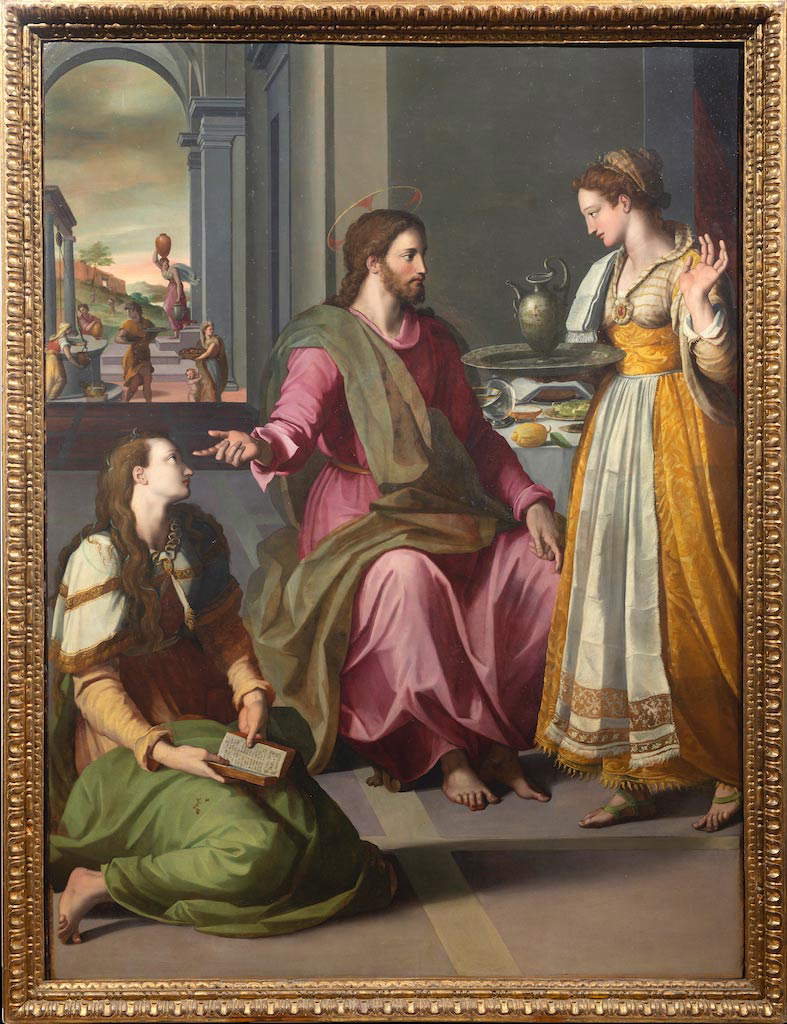
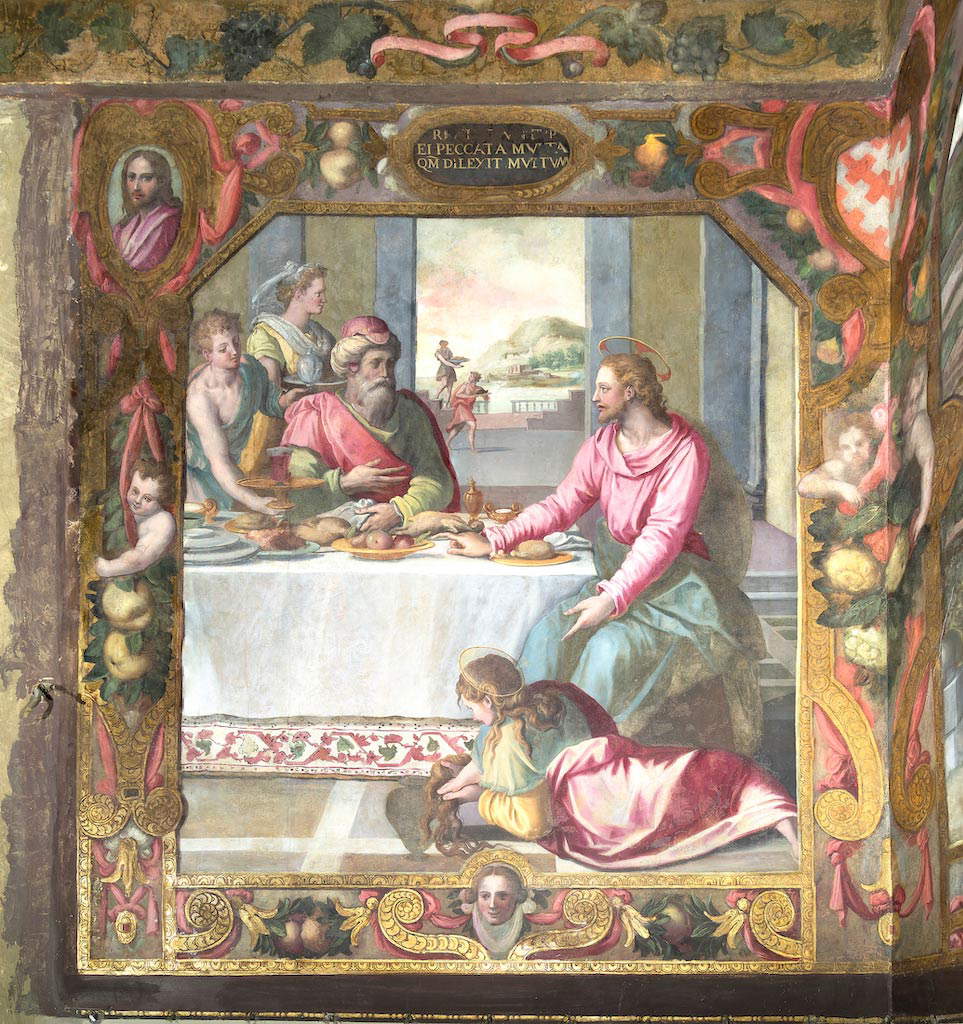
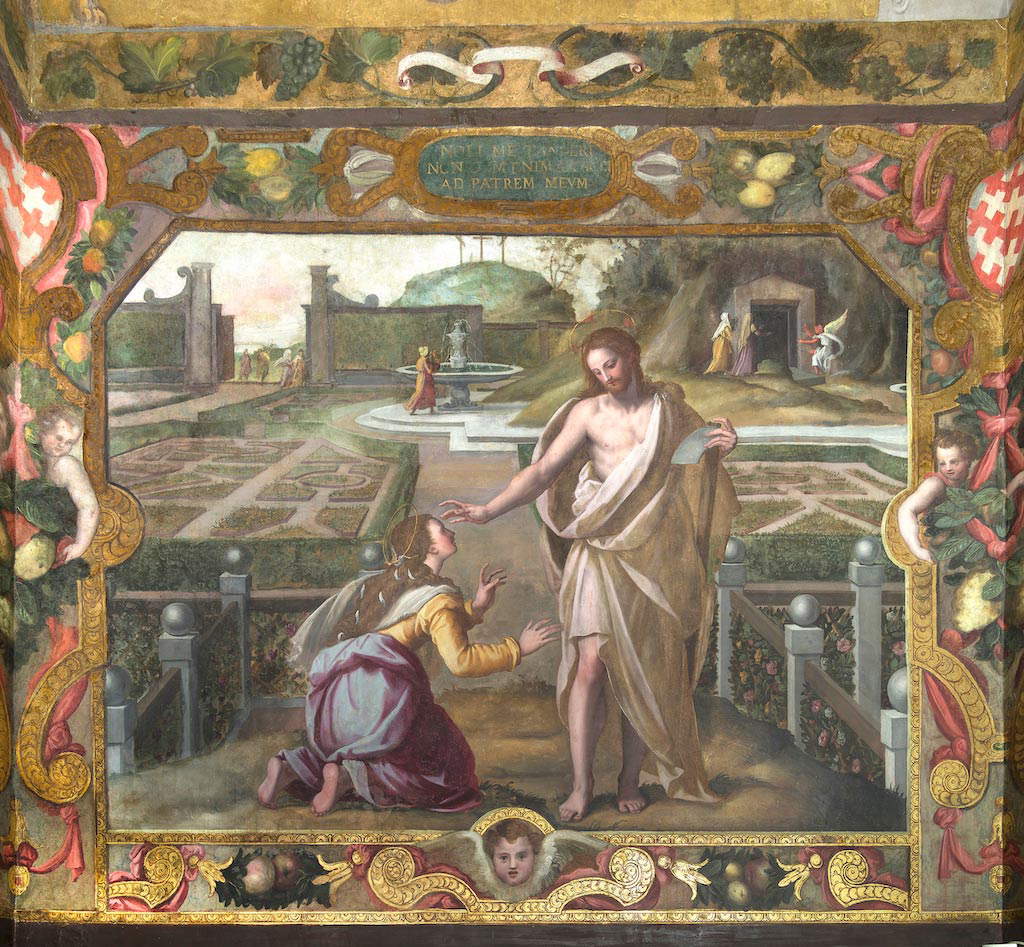
The Salviati Chapel, dedicated to St. Mary Magdalene, was consecrated in August 1581, as recorded by the plaque inserted outside the door. It is Alessandro Allori himself, to whom the then owner of the palace Jacopo Salviati had also entrusted the decorations of the Emperors’ Courtyard and other spaces on the ground floor, who testifies that in 1580 the Chapel was completed. In his Ricordi (Memories), Allori specifies that the assistants were Giovanni Butteri and Alessandro Pieroni and carefully describes the pictorial cycle, carried out from January 25, 1579 until May 1580, which includes on the vault the Prophets and Sibyls flanked by cherubs holding scrolls with passages from the Holy Scriptures, alternating in the corners with the four Old Testament sacrifices. Below the frieze with an elegant vine shoot are the three stories of the Magdalene(Magdalene wipes Jesus’ feet during dinner in Simon’s house, Noli me tangere, Magdalene’s Communion) complemented by the precious altar panel depicting Christ in the House of Martha and Mary. The canvas, a subject of domestic devotion in harmony with its destination in a private chapel, represents, however, as Mina Gregori points out, “also the search for new and rediscovered themes proper to those years.”
In fact, the cycle of frescoes in the Salviati Chapel constitutes an important document at the beginning of the eighth decade of the 1500s “of the process of transformation that affected sacred painting precisely as a result of the interventions of theAllori, Santi di Tito and other minor artists, engaged not only in the decoration of churches, but also of places intended for domestic devotion such as the Salviati Chapel, which constitutes a valuable example of those that, between the mid-sixteenth and early seventeenth centuries were set up in Florentine palaces,” Carlo Sisi also points out. The altar setting also included a predella that has now disappeared, with the Resurrection of Lazarus, while the remaining spaces of the small room are decorated with the abundant layering of gold, which especially in the vaulting achieves shining mosaic effects. The gilding was done by Bastiano di Benedetto del Chiesto in early October 1579, as Guido Pampaloni reveals. Usually, in fact, this technique was performed by specialized people called painters by their contemporaries because more than artistic gifts it demanded experience and patience. Finally, Pampaloni again testifies, Mastro Iovanni Iacopelli, a woodworker, was in charge of framing the canvases and preparing the walnut predella of the altar (no longer extant today) while maestro Girolamo Franceschi, a bookseller with a workshop at the Badia Fiorentina thought of the “lehatura di un messale in foglio grande... con cordame di lacca rosso.”
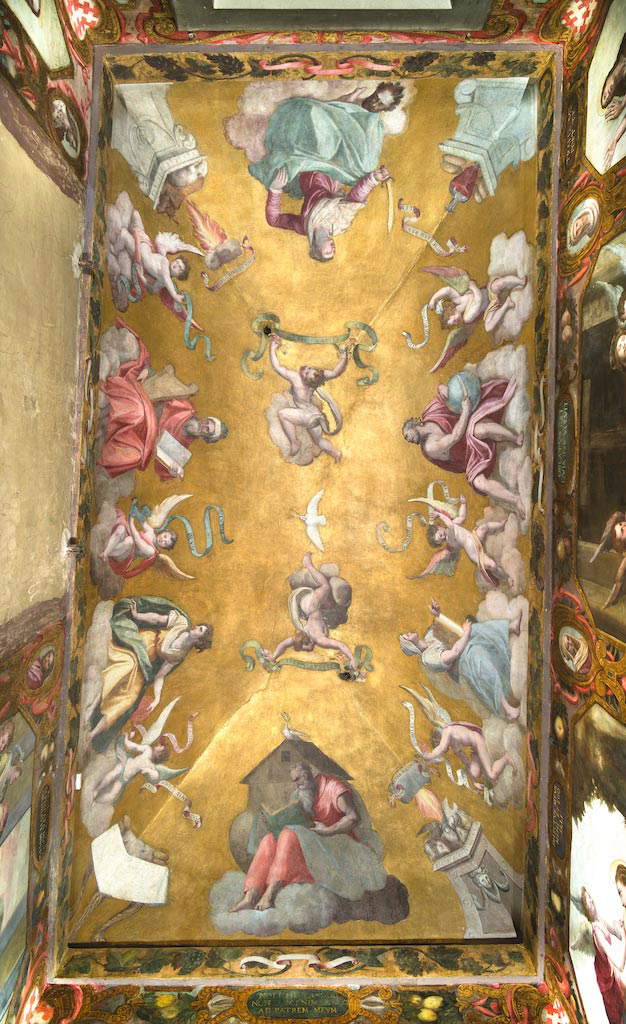
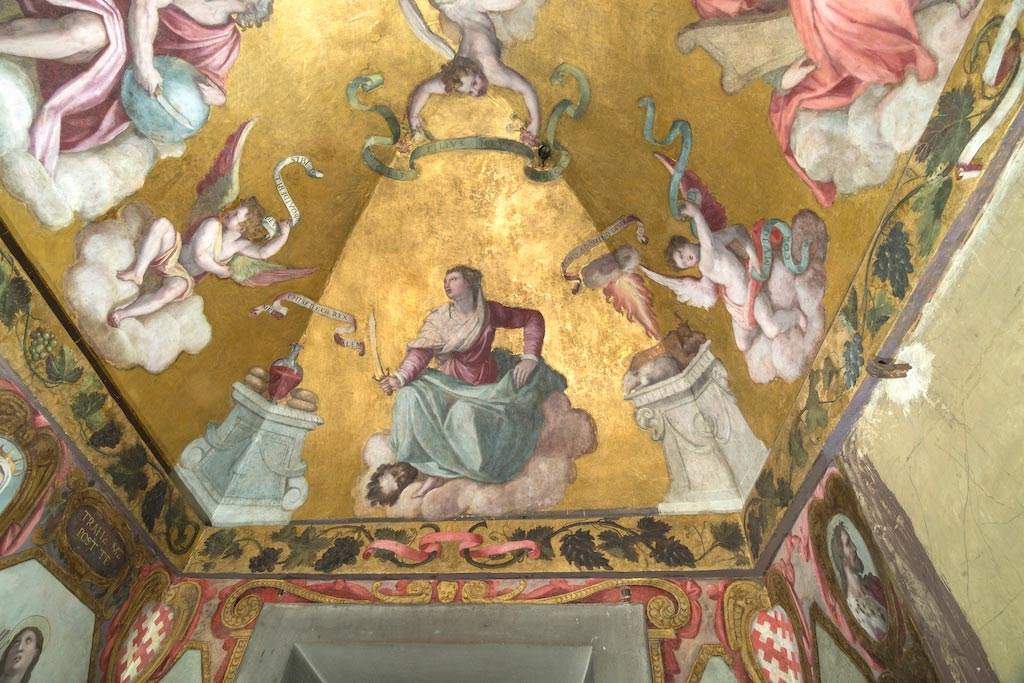
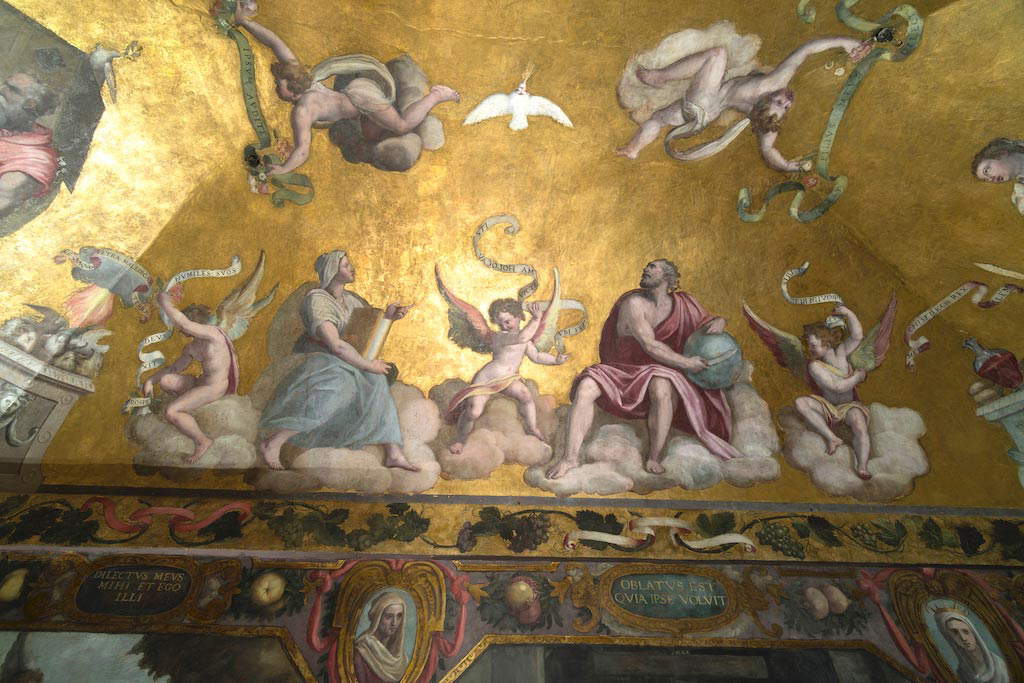
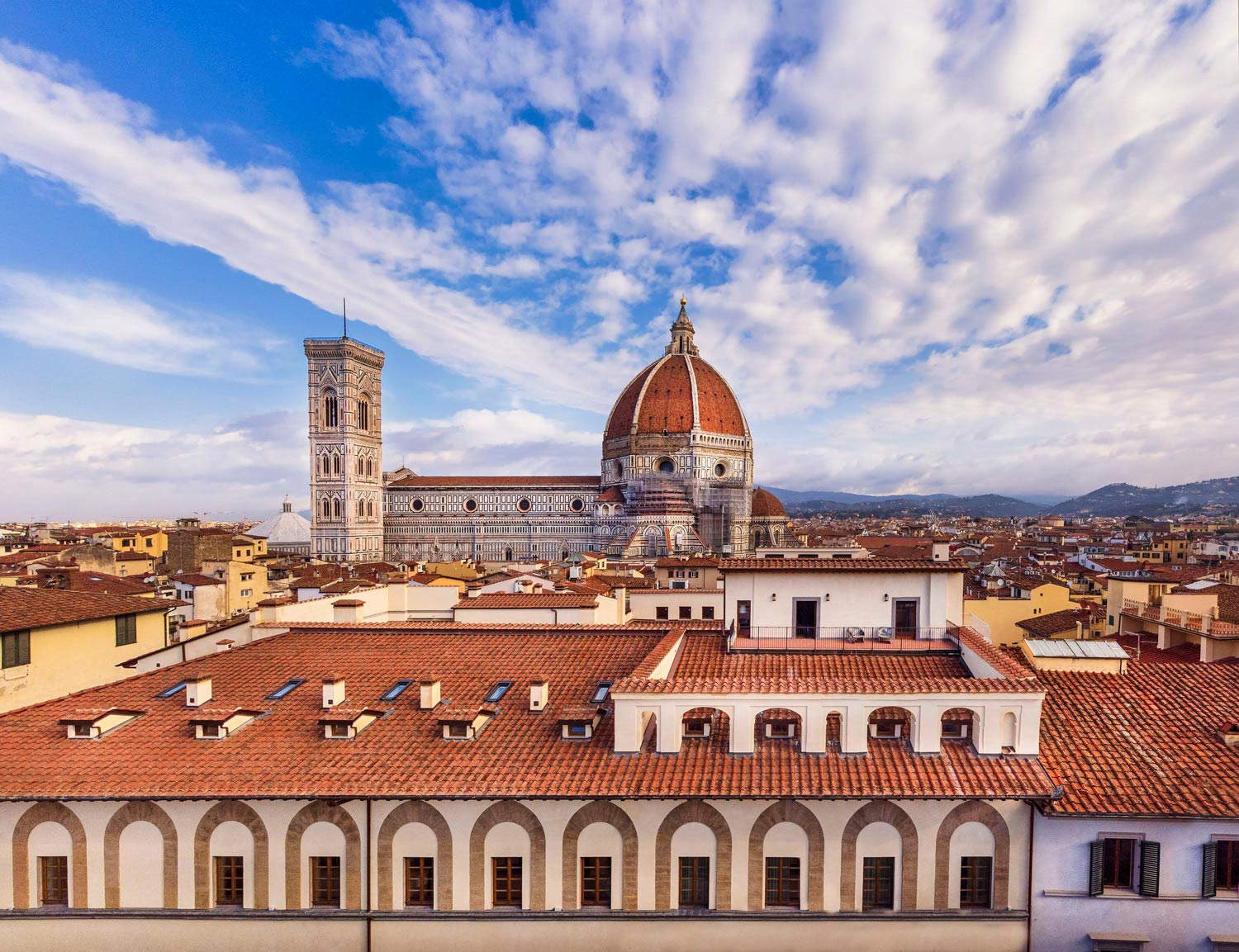
The restoration work began in February 2019. Scientific analyses, conducted through high-definition images and instrumental investigations designed by Professor Guido Botticelli and supervised by Soprintendenza officials Fulvia Zeuli and Jennifer Celani, have once again highlighted the particularity of these paintings, which were done in oil instead of buon fresco. The very full-bodied and textural brushstrokes testify that Allori most likely found himself painting on an already dry plaster on which he set the scenes operating on the wall as if he were facing a painting on a panel.
The decoration of the chapel is a rare example in the Florentine sphere of oil painting on the wall, an entirely unusual choice compared to the traditional good fresco painting typically used for wall decorations of this period. The reasons for this choice may be many: a plaster already finished at the time of the fresco, the search for greater brilliance and the possibility of achieving more defined details. Another example of this type in Florence is found in the Geographical Maps room of the Uffizi, painted in oil with gilded miniatures by Ludovico Buti, also a collaborator of Allori’s at Palazzo Portinari, around the end of the 1500s. The problems of the chapel, to the detriment of the beautiful materiality of the original pictorial film, are mainly due to moisture infiltration and soluble salts carried inside by the porosity of the plaster. Phenomena that have already made it necessary over time to resort to various restoration and maintenance works.
 |
| Florence, after decades the Chapel of Palazzo Portinari Salviati returns to visitability |
Warning: the translation into English of the original Italian article was created using automatic tools. We undertake to review all articles, but we do not guarantee the total absence of inaccuracies in the translation due to the program. You can find the original by clicking on the ITA button. If you find any mistake,please contact us.